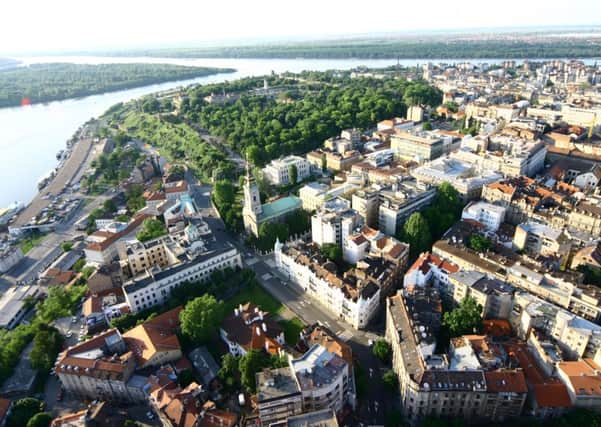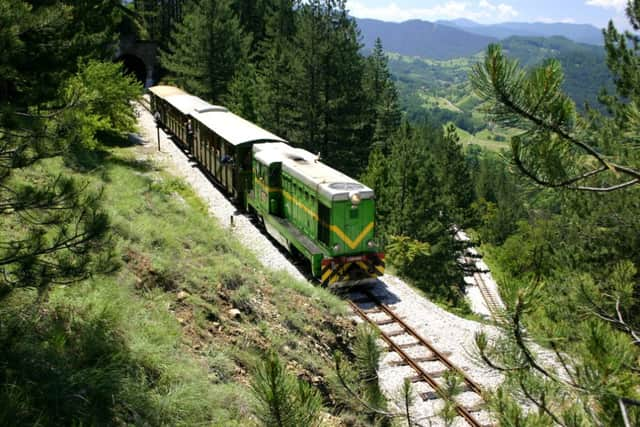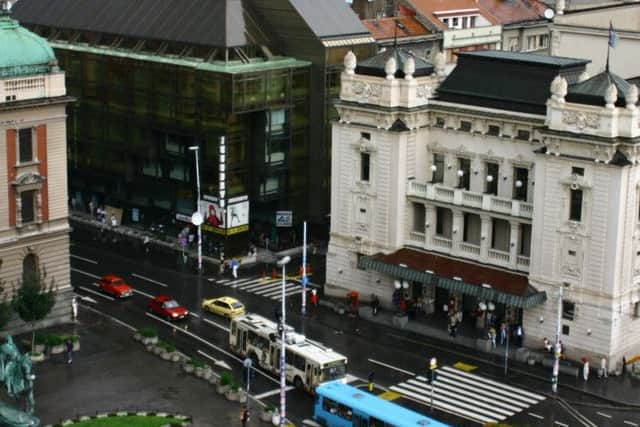Plenty of serb-prises on visit to the Balkans


Yugoslavia was once popular with British visitors but that was to the parts which offered seaside holidays. Serbia has no coastline so its attractions surround city breaks to the capital Belgrade and trips to its rolling countryside.
And it is Belgrade where most people arrive and as European capitals go it is not a great place for sightseeing.
Advertisement
Hide AdAdvertisement
Hide AdIt has few historic buildings simply because it has continually been invaded throughout history - ransacked and rebuilt 40 times, they say..


One exception is the Kalmegdan fortress, on a ridge overlooking the point where the Sava and the Danube rivers converge and approached via a park
Then there is the cathedral of St Sava whose history seems to sum Serbia up.
An awesome-looking Ottoman-style domed building you go inside and discover it remains unfinished. Construction only started in 1936 and was interrupted by the war and then neglected by the Nazis and the Communist rulers until work was resumed in 1985. You can stand under the central dome and marvel how they managed to lift all 4,000 tons of it up from the ground.
Advertisement
Hide AdAdvertisement
Hide AdThere are incidentally still buildings damaged by NATO bombing in 1999, some in private ownership too expensive to repair, others seemingly left as a reminder of the past.


Another legacy of those times, apparently, is the nightlife which has earned Belgrade the reputation of the party capital of Europe. With a daily threat to their lives Serbs decided they might as well party as if there was no tomorrow. Now there are numerous clubs, bars and restaurants open all night, with dancing and all kinds of music - electronic, rock, gipsy folk and a distinctly Serbian hybrid called Turbofolk.
On our first night we strolled around Stari Grad (central Old Belgrade) along the cobbled street called Skadarlija to which the description bohemian seems ready made. It could have been a film set - and actually was that night as we squeezed past a line of generators and trucks and glimpsed cameras and bright lights.
We were told we were having a pre-dinner drink in one of Belgrade’s secret bars and sure enough we were led round a backstreet and up some stairs and through an unobtrusive door to a room with wooden tables - and our first experience of rakija. It’s the national drink, a brandy made from distilled fermented fruit, usually plum. But there are other versions, we discovered, such as fig, cherry and quince. In the interests of research we had to try them all. The result is that the rest of the night is something of a blur.
Advertisement
Hide AdAdvertisement
Hide AdSerbians are proud people and, perhaps because in recent history their country was subsumed into Yugoslavia, like to remind you of important Serbians - from Nikola Tesla, the 19th century inventor of the light bulb (and you thought it was Edison) to Novak Djokovic.
Then there is Marshal Tito, communist ruler of Yugoslavia for 35 years, born in Croatia but whose mausoleum is in Belgrade. The House of Flowers is worth a visit if nothing else to wonder at his power which seemed to keep Moscow at bay while the country was the most westernised of the Eastern Bloc. There are pictures of him consorting with Richard Burton and Elizabeth Taylor. Also on display are thousands of elaborate relay batons presented to him by young ‘Pioneers’,
Serbians are friendly and hospitable people, especially in proffering the dreaded rakija, even at breakfast time, and it seemed churlish to refuse.
One of the pleasures of venturing out into the countryside is the opportunity to sample home cooking as we did at an overnight stop at Zeleni Cardaci or the Green Lodges, near the Tara National Park, Staying in one of their ‘ethno apartments’ costs around 50 Euros a night for two.
Advertisement
Hide AdAdvertisement
Hide AdMeals are served in the dining room of the owners’ house and they laid on quite a spread. Serbian food tends to be meat-based and the group was often presented with Pečenje, a plate piled high with roasted pork in a quantity you would rarely see in this country. Other national dishes are Pljeskavica (hamburger), Ćevapčići (ground meat sticks), Vešalica (grilled strips of pork loin) and lots of lots of sausages.
Everywhere we went the presence of a pesky vegetarian in the party didn’t seem to faze them. There are popular dishes, Prebranac, baked beans in sauce, and Sataraš, stewed vegetables similar to Ratatouille, but if they weren’t available they were happy to rustle up something like grilled vegetables.
The aforementioned Tara is in the South West of the country towards the Bosnian border. It’s a mountainous region of thick forest, limestone caves, and the Drina River. It’s a centre for outdoor pursuits - walking, river rafting, mountain biking - or just enjoying nature with plentiful wildlife. It’s home to 153 bird species, we were told..
In the centre is the resort of Zlatibor where there’s skiing in winter. For us in the autumn there was an extensive market and lively nightlife.
Advertisement
Hide AdAdvertisement
Hide AdNearby is the ethno village of Sirogojno with its open-air museum consisting of traditional wooden houses showing how families lived in a co-operative in the late 19th and early 20th centuries. Our visit coincided with a wedding at the church complete with brass band-led procession as if laid on for us tourists but actually it was just someone getting married.
Also in the region is what is surely one of the wonders of the world, at least to train buffs - the Sargan 8 railway (so called because that’s the shape of the route) which for 13.5km zig-zags up the mountain through 20 tunnels affording spectacular views - of where the train has just come from..
Not far away is Küstendorf, a traditional village that the Serbian film director Emir Kusturica built for a movie, Life Is a Miracle, and where he now lives for part of the year.
Like his films Küstendorf is weird. It has an gallery, a library, a church, an underground cinema, a pastry and sweetshop, a national restaurant and a craft market, among other facilities which are just there for tourists, it seems (there’s a hotel and apartments on site).
Advertisement
Hide AdAdvertisement
Hide AdThe streets have names of famous people that Kusturica holds in high esteem such as Nikola Tesla, Che Guevara, Diego Maradona, Federico Fellini and Ingmar Bergman.
It’s a prime example of how Serbia continually surprises you.
Getting there: Flights to Belgrade by JAT Airways ((020 7629 2007; jatlondon.com) from Heathrow and Wizz ((0906 959 0002; wizzair.com). from Luton with connections from regional airports.
Currency: Serbia’s official currency is the dinar and is best exchanged when you get there. Cash machines accept most British debit cards.
Best time to visit: March to May, September and October
Further information: From www.serbia.travel